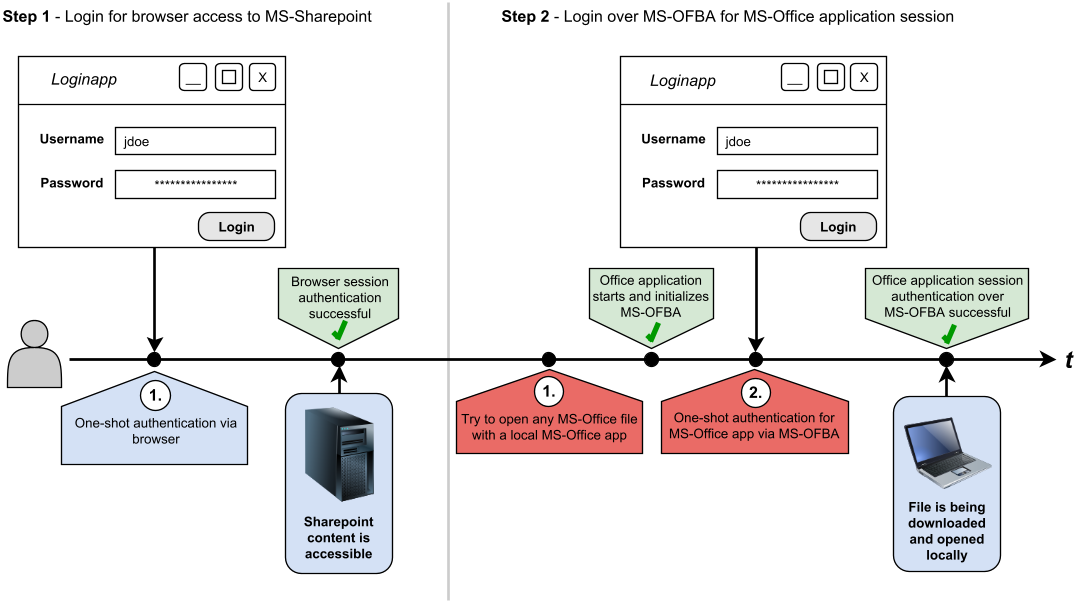The MS-OFBA protocol provides a mechanism for native MS Office applications (e.g. Word, Excel, etc.) to establish an authenticated HTTP session with an MS-SharePoint server protected by the Airlock Secure Access Hub.
In combination with Airlock Gateway, Airlock IAM supports HTTP-based authentication via MS-OFBA. The IAM authentication process for MS-OFBA has been designed as a one-shot authentication flow, using the MS-OFBA One-Shot Target Application.
Limited Loginapp features available
Note that the MS-Office applications (e.g. Word) use outdated browser libraries (IE11 or IE8) that are not compatible with the AIrlock IAM Loginapp UI.
The Loginapp UI provides a very limited set of features available for MS-OFBA by offering a separate Loginapp front-end written in JavaScript. Currently, only username password authentication and mTAN as the second factor are supported.
If Microsoft does not update to newer browser libraries, MS-OFBA support may be removed from Airlock IAM in future versions.
